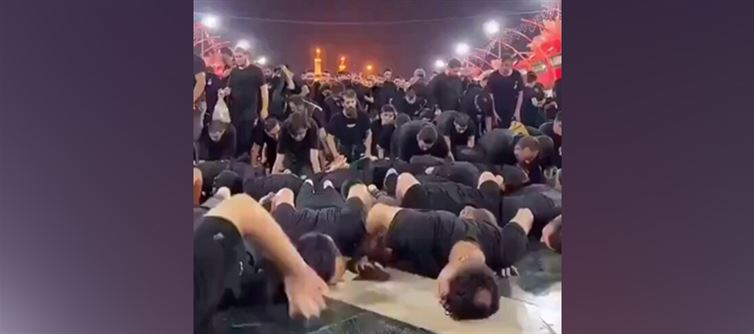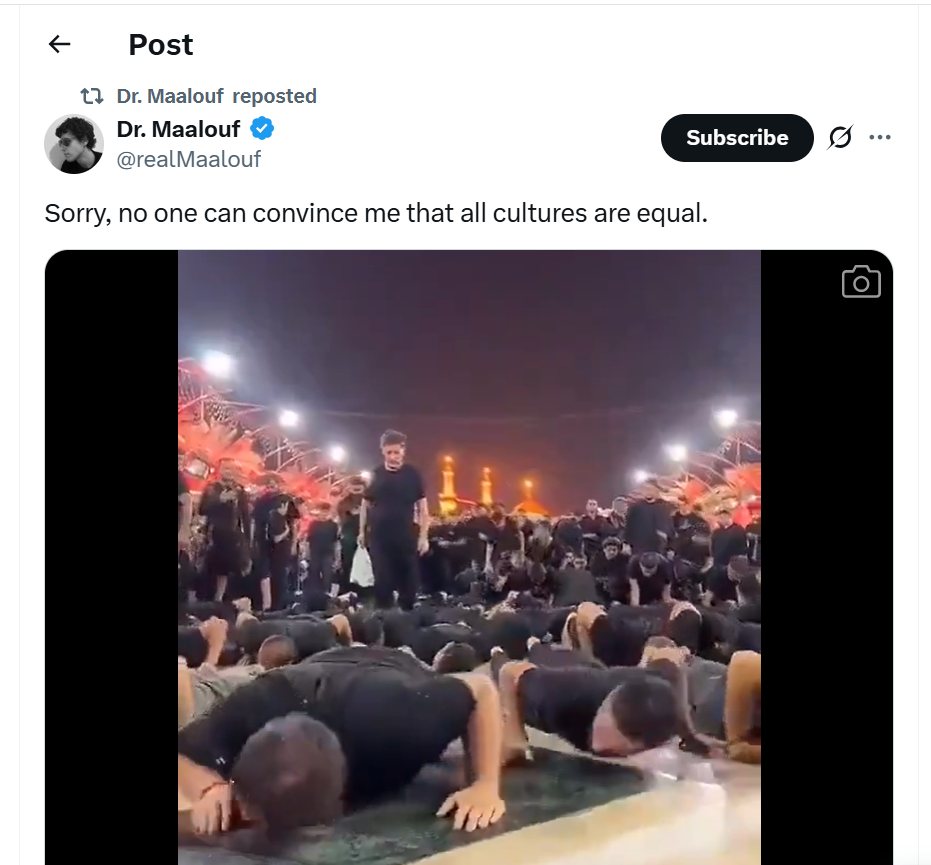
The video, consisting of a series of images taken at intervals, depicts a vast number of men, all dressed in black, participating in what looks like a coordinated activity. They are positioned on the ground, some on their hands and knees, others fully prostrate, moving forward in a crawling motion.
 The men’s movements suggest a ritualistic or devotional practice, possibly related to the Arbaeen Pilgrimage, a significant event in Shia islam that commemorates the martyrdom of Imam Hussein. The pilgrimage, which attracts millions of participants annually, often involves acts of penance and physical endurance, reflecting deep spiritual commitment.
The men’s movements suggest a ritualistic or devotional practice, possibly related to the Arbaeen Pilgrimage, a significant event in Shia islam that commemorates the martyrdom of Imam Hussein. The pilgrimage, which attracts millions of participants annually, often involves acts of penance and physical endurance, reflecting deep spiritual commitment.Karbala is a central site in Shia islam, known for the Battle of Karbala in 680 CE, where Imam Hussein, the grandson of Prophet Muhammad, was martyred. The Arbaeen Pilgrimage, marking 40 days after his death, is one of the largest religious gatherings in the world. Participants often undertake long journeys on foot, and some engage in additional acts of devotion, such as crawling towards the shrine as a sign of humility and repentance.
The practice of crawling, as seen in the video, can be understood as a form of Ziarat (visitation) and a physical expression of mourning and respect. It is rooted in the belief that such acts bring spiritual merit and closer connection to the imams. The black clothing worn by the participants is traditional during mourning periods in Shia culture, symbolizing grief and solidarity.
The Arbaeen Pilgrimage, while a powerful expression of faith for millions, may appear extreme or unfamiliar to those outside the Shia Muslim community. Such perceptions can fuel stereotypes and misunderstandings, contributing to broader debates about cultural relativism and the equality of cultures, as Dr. Maalouf’s tweet suggests.




 click and follow Indiaherald WhatsApp channel
click and follow Indiaherald WhatsApp channel